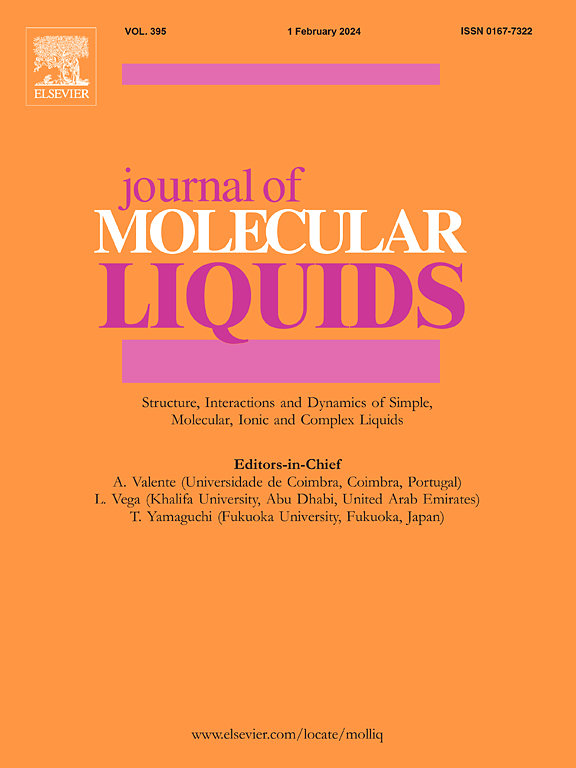Interactions between functionalized PEGylated gold nanoparticles and model biological membranes
IF 5.3
2区 化学
Q2 CHEMISTRY, PHYSICAL
引用次数: 0
Abstract
A better understanding of the interaction mechanism between functionalized gold nanoparticles and cell membrane components helps study the impact of particulate matter on biomimetic systems. The paper reports how gold nanoparticles with different geometries (spherical and rod-shaped) were synthesized with slight modifications and functionalized with polyethylene glycol. Efficient pegylation process and addition of HCl to the growth solution results in highly monodisperse nanoparticles. The obtained functionalized nanoparticles were characterized by UV–V is spectroscopy, transmission electron microscopy and dynamic light scattering. This article focuses on the effect of gold nanoparticles on the surface properties of model biological membranes consisting of phospholipids (1,2-dipalmitoyl-sn-glycero-3-phosphocholine (DPPC) and 1-palmitoyl-2-oleoyl-glycero-3-phosphocholine (POPC)) in the presence of cholesterol, which is an organic chemical compound, a lipid from the steroid group. The effect of the nanoparticles with different shapes on the behavior of monolayers was described using surface pressure isotherms, surface compressibility modulus, Brewster angle microscopy and polarization modulation infrared reflection absorption spectroscopy. It was shown that for all lipid systems considered, the type of nanoparticles affects the degree of condensation and the morphology of the monolayer. The studies showed that the monolayers of lipid systems containing spherical gold nanoparticles are characterized by greater stability than the monolayers containing gold nanorods. Based on the research, it can also be assumed that some of the gold nanoparticles are incorporated into lipid monolayers, while others remain on the lipid monolayer surface. The results presented may be useful to better understand the interaction between nanoparticles and the lipid components of biomembranes.

求助全文
约1分钟内获得全文
求助全文
来源期刊

Journal of Molecular Liquids
化学-物理:原子、分子和化学物理
CiteScore
10.30
自引率
16.70%
发文量
2597
审稿时长
78 days
期刊介绍:
The journal includes papers in the following areas:
– Simple organic liquids and mixtures
– Ionic liquids
– Surfactant solutions (including micelles and vesicles) and liquid interfaces
– Colloidal solutions and nanoparticles
– Thermotropic and lyotropic liquid crystals
– Ferrofluids
– Water, aqueous solutions and other hydrogen-bonded liquids
– Lubricants, polymer solutions and melts
– Molten metals and salts
– Phase transitions and critical phenomena in liquids and confined fluids
– Self assembly in complex liquids.– Biomolecules in solution
The emphasis is on the molecular (or microscopic) understanding of particular liquids or liquid systems, especially concerning structure, dynamics and intermolecular forces. The experimental techniques used may include:
– Conventional spectroscopy (mid-IR and far-IR, Raman, NMR, etc.)
– Non-linear optics and time resolved spectroscopy (psec, fsec, asec, ISRS, etc.)
– Light scattering (Rayleigh, Brillouin, PCS, etc.)
– Dielectric relaxation
– X-ray and neutron scattering and diffraction.
Experimental studies, computer simulations (MD or MC) and analytical theory will be considered for publication; papers just reporting experimental results that do not contribute to the understanding of the fundamentals of molecular and ionic liquids will not be accepted. Only papers of a non-routine nature and advancing the field will be considered for publication.
 求助内容:
求助内容: 应助结果提醒方式:
应助结果提醒方式:


